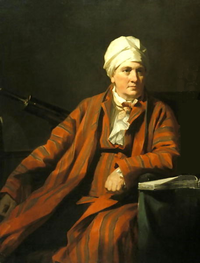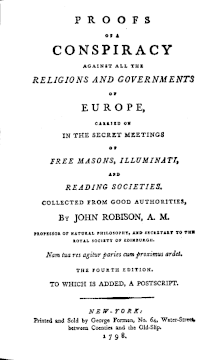Biography
The son of John Robison, a Glasgow merchant, he was born in Boghall, Baldernock, Stirlingshire (now East Dunbartonshire) and attended Glasgow Grammar School and the University of Glasgow (MA 1756). After a brief stay in London in 1758 Robison became the tutor to the midshipman son of Admiral Knowles, sailing with the Royal Navy on General Wolfe's expedition to Quebec and Portugal (1756–62). His mathematical skills were employed in navigation and surveying. Returning to Britain in 1762, he joined the Board of Longitude — a team of scientists who tested John Harrison's marine chronometer on a voyage to Jamaica.
Subsequently, he settled in Glasgow engaging in the practical science of James Watt and Joseph Black in opposition to the systematic continental European chemistry of Antoine Lavoisier and its adherents such as Joseph Priestley. In 1766 he succeeded Black as Professor of Chemistry at the University of Glasgow. He in turn was succeeded in 1770 by Black's assistant, William Irvine.
In 1769, he announced that balls with like electrical charges repel each other with a force that varies as the inverse-square of the distance between them, anticipating Coulomb's law of 1785.
In 1770 he travelled to Saint Petersburg as the secretary of Admiral Charles Knowles, where he taught mathematics to the cadets at the Naval Academy at Kronstadt, obtaining a double salary and the rank of lieutenant colonel. Robison moved to Scotland in 1773 and took up the post of Professor of natural philosophy at the University of Edinburgh. He lectured on mechanics, hydrostatics, astronomy, optics, electricity and magnetism. His conception of mechanical philosophy' became influential in nineteenth-century British physics. His name appears in the 1776 "Minute Book of The Poker Club", a crucible of the Scottish Enlightenment. In 1783 he became General Secretary of the Royal Society of Edinburgh and in 1797 his articles for the Encyclopædia Britannica gave a good account of the scientific, mathematical and technological knowledge of the day. He also prepared for publication, in 1799, the chemical lectures of his friend and mentor, Joseph Black.
Robison worked with James Watt on an early steam car. This project came to nothing and has no direct connection to Watt's later improvement of the Newcomen steam engine. He along with Joseph Black and others gave evidence about Watt's originality and their own lack of connection to his key idea of the Separate Condenser.
Robison did however invent the siren, though it was Charles Cagniard de la Tour who named it after producing an improved model.

